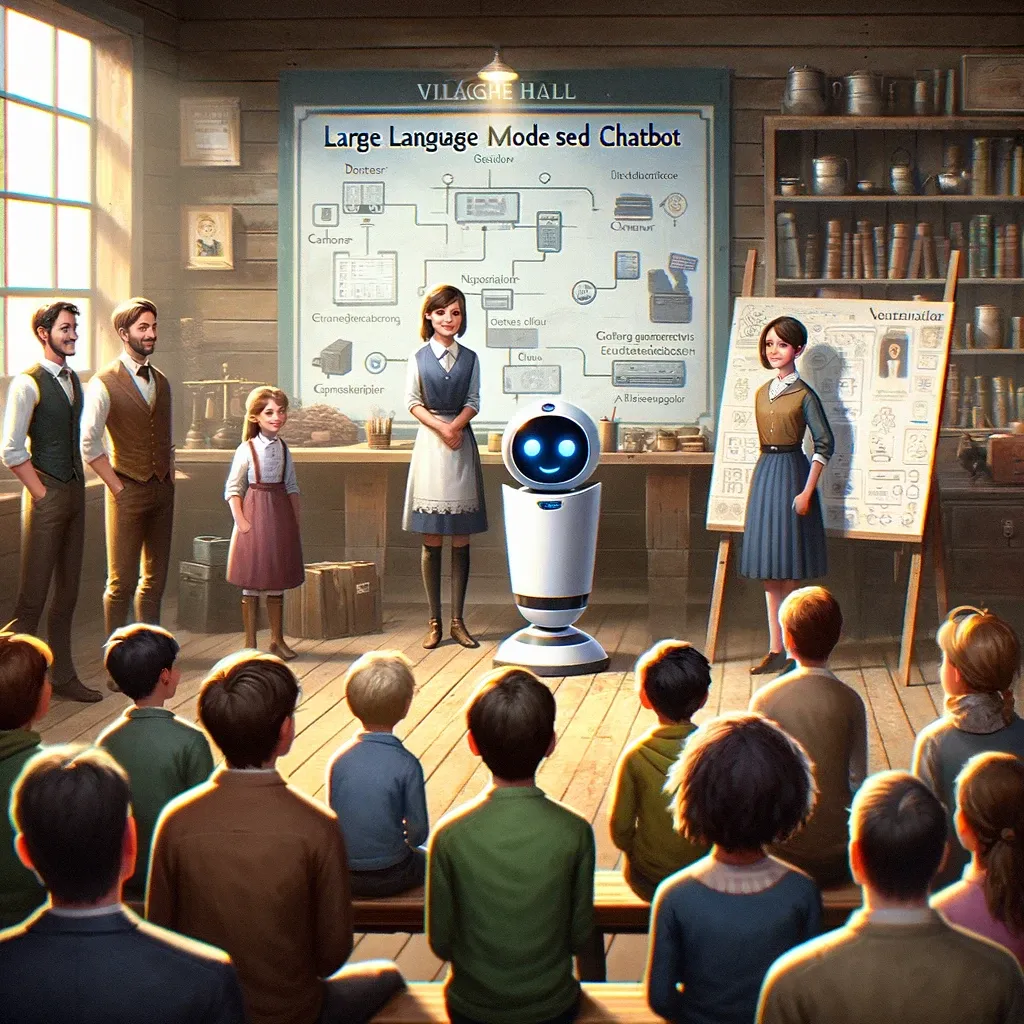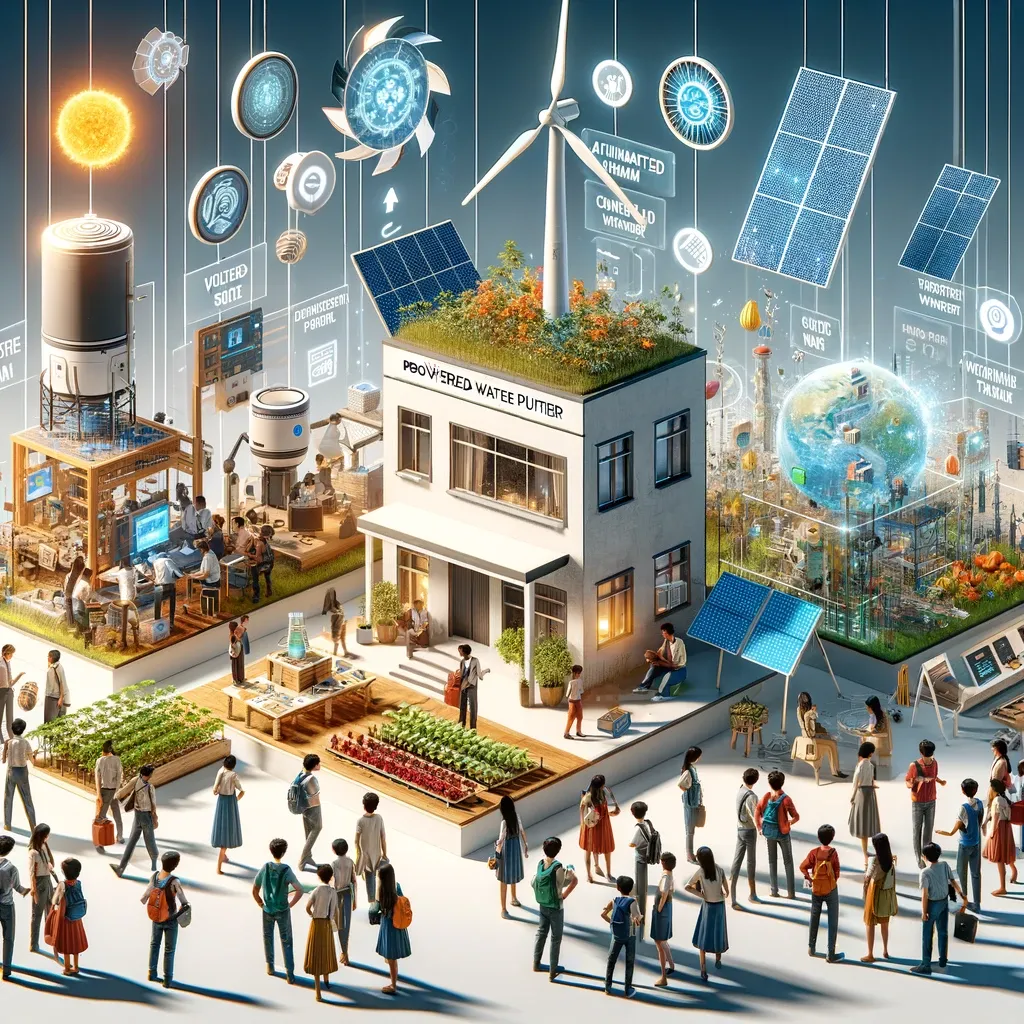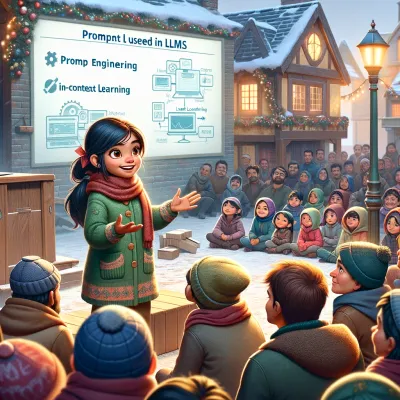Day 24 - Beyond the magic

The village hall buzzed with anticipation as Dr. Silverman took the stage, the air thick with excitement for the impending award announcement. But first, Dr. Silverman had a crucial message to share.
"Good evening, everyone," Dr. Silverman began, his voice resonating through the hall. "Before we get to the exciting part of the evening, I want to talk about something important – the wonders and the warnings of using Large Language Models like Charger."
The room fell silent, all ears on Dr. Silverman.
"LLMs," he continued, "have brought us incredible advancements. They understand and generate human language with remarkable finesse. They're versatile, aiding in everything from writing stories to building intelligent chatbots. They automate routine tasks, enhance user experiences, and even help in educational and business settings."
Dr. Ingrid nodded in agreement, recalling how LLMs had opened new avenues in her linguistic research.
"But," Dr. Silverman added, his tone shifting, "there's a 'but'."
The Cautionary Tales
"LLMs are not without their challenges," he cautioned. "They can amplify biases, raise data privacy concerns, and sometimes, they hallucinate – generating plausible but incorrect information."
Mo, recalling his earlier confusion, nodded understandingly.
"Running these models is a resource-intensive task, both computationally and environmentally. They depend heavily on their training data, which means they might not always provide the most relevant or accurate answers."
A murmur of realization swept through the crowd.
"And let's not forget," Dr. Silverman said, "they don't truly understand the content. They lack reasoning abilities and can be misled easily."
"Let me elaborate all of these", said Dr. Silverman.
Dr. Silverman paused for a moment, letting the room settle before continuing with a more serious tone. "Now, let's delve into the cautionary side of LLMs. It's crucial we understand these, not to diminish their value, but to use them wisely."
- Bias and Ethical Issues
"First, there's the issue of bias," he began. "These models learn from vast amounts of data, data that includes human biases. This means they can unintentionally perpetuate stereotypes or unfair representations, affecting the fairness of their responses."
A few nods from the audience indicated their understanding.
- Privacy Concerns
"Next, data privacy," Dr. Silverman continued. "These models often train on public data, which can include sensitive information. This raises concerns about privacy and the potential misuse of personal data."
- Environmental and Computational Costs
"The computational demands of these models are not trivial," he added. "They require significant power to run, which has environmental impacts due to high energy consumption. It's a factor we must consider in our pursuit of technological advancement."
- Hallucinations and Misinformation
Dr. Silverman then touched on a more perplexing issue. "LLMs can 'hallucinate', generating convincing but false or nonsensical information. This is particularly problematic when we rely on them for accurate data or decision-making."
- Lack of True Comprehension
"Despite their sophistication, these models don't truly understand what they're processing. They lack real-world knowledge and reasoning ability, often leading to errors or irrelevant outputs in complex scenarios."
- Overdependence on Training Data
Dr. Silverman emphasized the models' limitations due to training data. "Their knowledge is limited to what they've been trained on. They're not aware of current events or developments that occur post-training, which can limit their effectiveness in certain applications."

- Challenges in Customization
"Tailoring these models for specific tasks or industries can be a complex and resource-intensive endeavor, requiring significant expertise," he explained.
- Interpretability Issues
"One of the biggest challenges in AI today is understanding why a model gives a certain output. This lack of transparency can be a significant hurdle in fields where explanation and accountability are crucial."
A Word on Responsible Usage
"It's essential to use these models responsibly," Dr. Silverman emphasized. "They're powerful tools, but like all tools, they must be used with care and understanding."
As Dr. Silverman transitioned to the topic of responsible usage, his tone became more instructional, mirroring that of a teacher addressing eager students.
- Understanding the Limitations
"Let's start with understanding the limitations," he began. "Recognize that LLMs, for all their capabilities, are not infallible. They can make mistakes, and sometimes, these mistakes can be significant. It's important to double-check the information, especially for academic work or important decisions."
Eva, sitting among her schoolmates, nodded in agreement, acknowledging the importance of critical thinking even when using AI.
- Ethical Use and Bias Awareness
"Ethics is paramount," Dr. Silverman continued. "We must be mindful of how these models can reflect societal biases. Always question the fairness and inclusivity of the responses, especially when using these models in diverse cultural and social contexts."
- Respecting Privacy
"Privacy concerns cannot be overstated," he stressed. "Be cautious about the data you feed into these models. Avoid sharing sensitive personal information, and remember, whatever is input into these systems can potentially be accessed by others."
- Environmental Consciousness
"The environmental impact of running large models is a real concern. We must strive to use these resources judiciously, ensuring that we don't contribute unnecessarily to energy consumption and carbon emissions."
- Combating Misinformation
"In an era where misinformation can spread rapidly, be vigilant about verifying the information generated by these models. This is particularly important for students who might use these tools for research and learning."
Eva's friend Lily, known for her curiosity, raised her hand and asked, "So, we should always cross-check the facts?"
"Exactly, Lily," Dr. Silverman affirmed. "Always cross-reference with reliable sources."
- Encouraging Creativity, Not Dependence
"And finally," Dr. Silverman concluded, "while these tools can enhance creativity and productivity, they shouldn't replace your own critical thinking and problem-solving skills. They are aids, not substitutes."
They are aids, not substitutes.
The hall was filled with a new sense of understanding. The students, in particular, looked at each other, their faces reflecting a newfound respect for the power and responsibility that came with using such advanced technology.
"As we continue to explore and innovate with these models," Dr. Silverman said, "let's do so with mindfulness and a commitment to using them for the betterment of our community."
With these guiding principles laid out, the villagers felt more equipped to engage with LLMs like Charger, understanding both their potential and their pitfalls.
"Speaking of tools," he transitioned, "let's talk about the incredible innovations presented today. Each project showed ingenuity and the potential to revolutionize our village life."
"First, let's applaud the team from Meadowbrook Village," Dr. Silverman announced. "They've created a Solar-Powered Water Purifier. This ingenious device uses solar energy to purify water, making it both environmentally friendly and crucial for areas with limited access to clean water. It's a game-changer for sustainable living."
The crowd clapped enthusiastically, acknowledging the importance of such an innovation.
"Next, from Riverside Village, we have the Automated Vertical Farm," he continued. "This compact farming solution uses vertical space and automated systems to grow crops. It's perfect for urban settings, addressing food security while optimizing space usage."
A buzz of impressed murmurs rippled through the crowd.
"Then there's the Eco-Friendly Waste Converter by Oakwood Village," Dr. Silverman said. "This remarkable machine turns organic waste into compost and biofuel. It's a significant step towards waste reduction and sustainable energy."
The audience nodded in approval, recognizing the environmental impact of such an innovation.
"Then we had Charger - A Large Language model based Chatbot designed using RLHF for the village, by the village by Eva and her team from Yuletide Village"
The audience clapped loudly, showcasing that they loved the education received about the new world of LLMs.

"And let's not forget the Portable Wind Turbine from Hilltop Village," he added. "It's a compact, efficient turbine that can be easily set up to harness wind energy. Ideal for remote areas, it's another step towards renewable energy solutions."
The villagers clapped louder, inspired by the potential of renewable energy.
"Finally, from Lakeside Village, we have the Smart Weather Prediction System," Dr. Silverman concluded. "Using localized sensors and advanced algorithms, it predicts weather patterns with remarkable accuracy, aiding farmers and outdoor planners alike."
As the applause rang out, the diversity of the projects presented a vivid picture of the various ways technology could be harnessed for the betterment of communities. It wasn't just about AI and LLMs; it was about innovative thinking and solving real-world problems.
The audience clapped, pride evident on every face.
The Grand Announcement
"And now," Dr. Silverman said, his eyes twinkling, "I'd like to invite Ms. Akemi Takada to announce the winner."
Ms. Takada, a respected figure in the community, stepped onto the stage. The hall was so quiet you could hear a pin drop.

"And the winner is... Charger!" she declared.
The hall erupted in cheers and applause. Eva, her team, and Rohit beamed with pride.

A Triumph of Community and Technology
As the celebration continued, the villagers reflected on Dr. Silverman's words. They realized the power and responsibility that came with using technologies like LLMs. Charger's victory was not just a testament to technological prowess but also to the village's unity and their journey towards a future where technology and human ingenuity walked hand in hand.
No spam, no sharing to third party. Only you and me.






